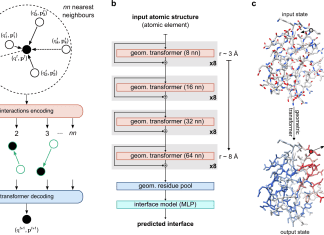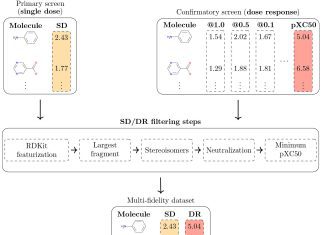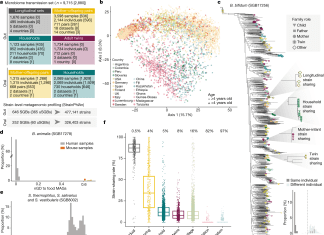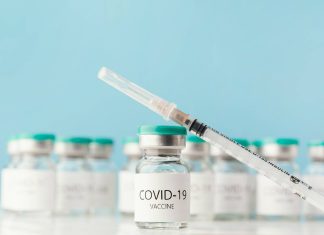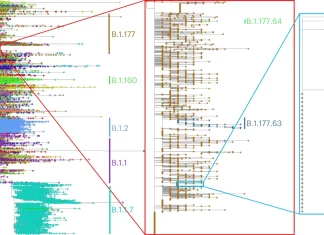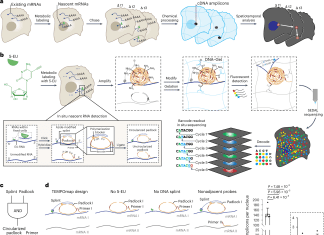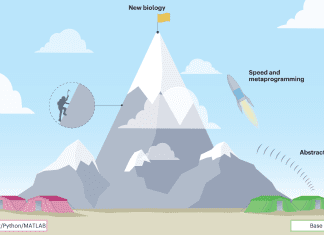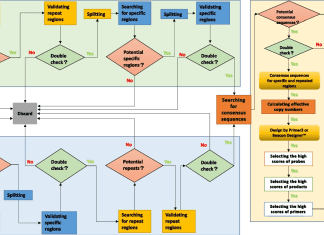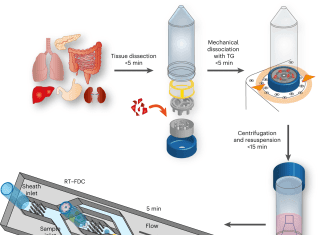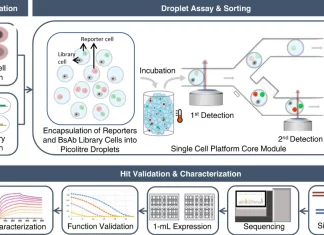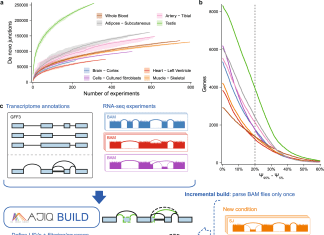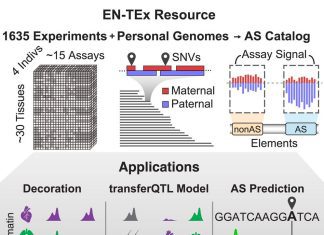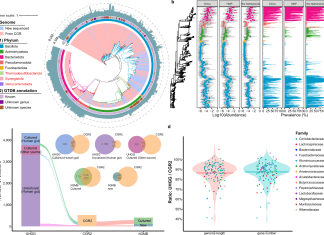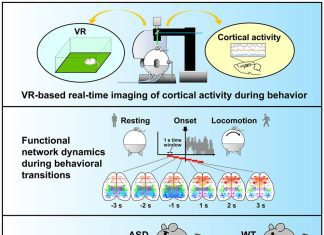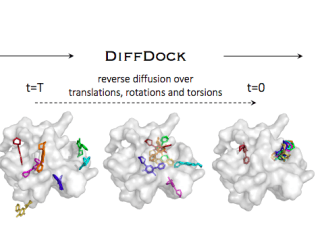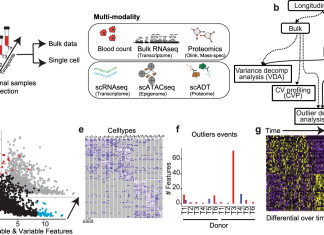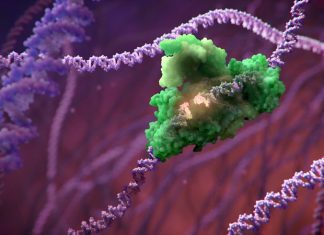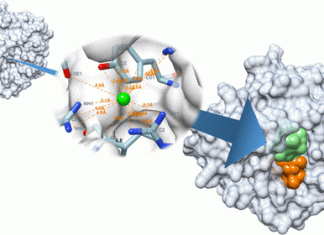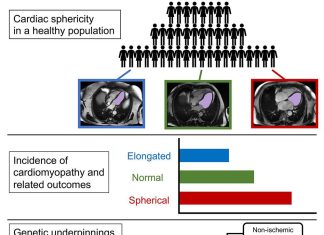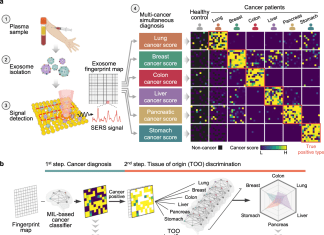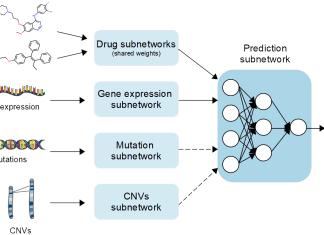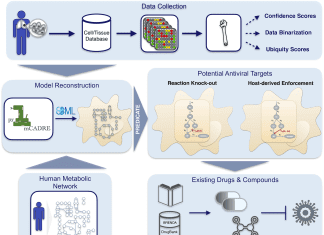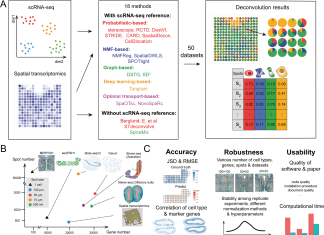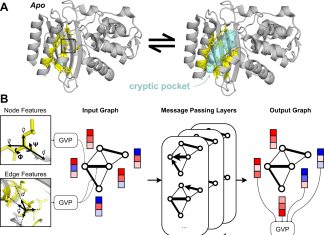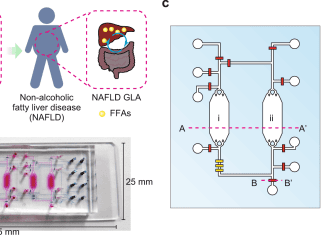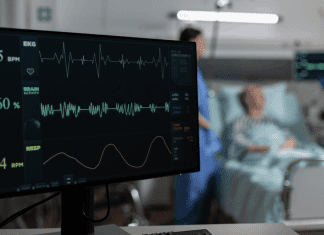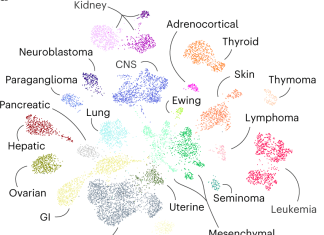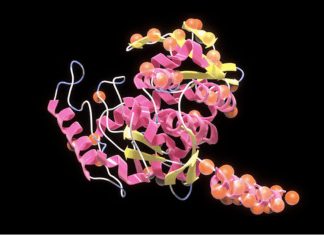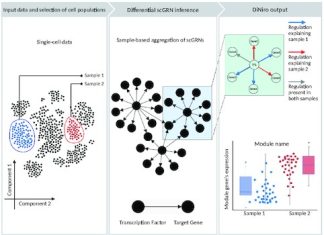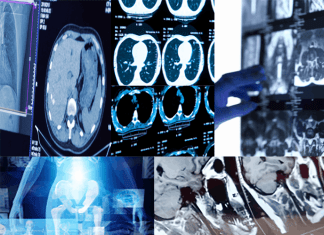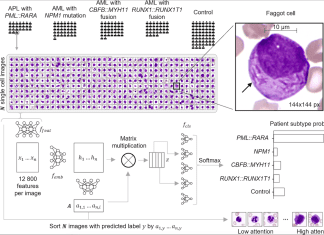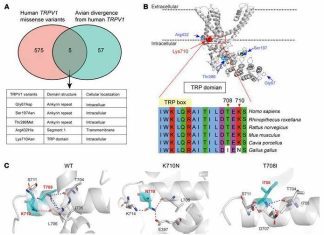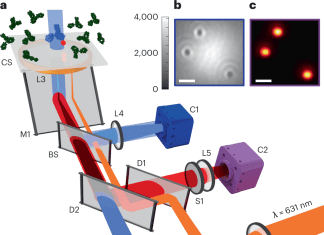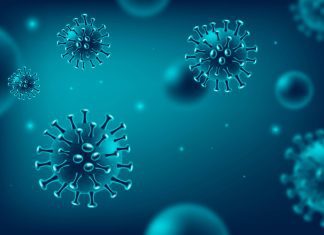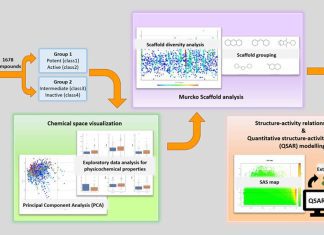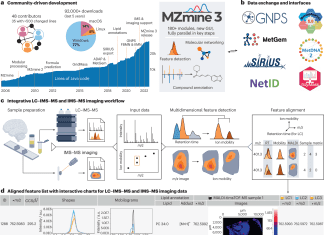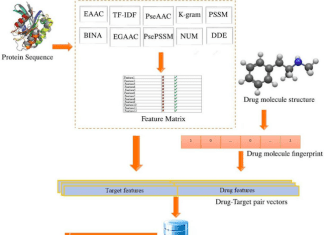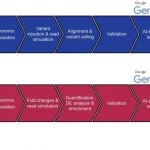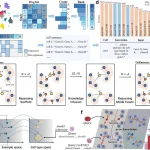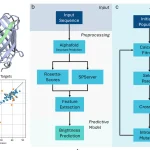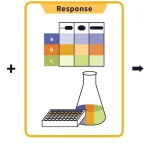New Insights into the Etiologies of Early-Onset Colorectal Cancer Through an...
There is a growing number of incidences of colorectal cancer in people under the age of 50 (EOCRC), but the intrinsic molecular mechanisms underpinning...
Accurate Prediction of Protein Binding Interfaces with PeSTo: A Parameter-free Geometric...
Advancement in the field of genome sequencing has seen an increase in the amount of sequence data. In spite of that knowledge regarding the...
Meet MF-PCBA: Multi-fidelity High-Throughput Screening Benchmarks for Drug Discovery and ML
Scientists from the University of Cambridge present Multifideity PubChem Bioassay, MF-PCBA, a collection of 60 molecular datasets with multiple modalities, reflecting the real-world nature...
New Study Reveals Extensive Person-to-Person Gut and Oral Microbiome Transmission Landscape
The human microbiome is an essential aspect of the human body and could be responsible for several health conditions. Yet, much of microbiome transmission...
Long-Term Protection from COVID-19: The Promise of T-Cell Vaccines Designed using...
Scientists from Denmark and Pennsylvania have developed a machine learning-based platform, RAVEN, that is able to design T-cell vaccines for COVID-19. These vaccines are...
Pediatric Rare Disease Diagnosis using Trio RNA Sequencing
The RNA-Seq (RNA sequencing) program at The Hospital for Sick Children (SickKids) is focused on developing new tools for Pediatric Rare Disease research. Their clinically...
Transforming Drug Discovery with BEAR: A New Virtual Screening Approach Utilizing...
Data-driven drug discovery provides an effective path for drug development using large bioassay datasets containing the bioactivity profiles of millions of compounds. Recently, researchers...
Deep Learning on Retinal Images: Google’s Aging Clock ‘eyeAge’ Unlocks the...
Google scientists have developed a novel aging clock based on retinal images using deep learning techniques called "eyeAge." The biological clock is often said...
Unleashing the Power of OpenAI’s ChatGPT for Solving Bioinformatics Programming Tasks
Computer programming is crucial for life scientists, as it enables them to perform many essential research tasks. However, learning to code can be challenging...
Google Introduces Med-PaLM 2: An AI-based Medical Language Model for Comprehensive...
Google has made significant advancements in the field of AI-based medical technology with the launch of Med-PaLM 2, a limited-access tool that utilizes the...
EMBL-EBI Researchers Develop a Phylogenetic Tool ‘MAPLE’ to Uncover Insights from...
The rapid influx of large genomic data during the recent pandemic caused by COVID-19 constrained the researcher's ability to analyze vast microbial genomes at...
Tracking Gene Expression Changes in Single Cells over Time and Space...
Scientists from the Broad Institute of MIT and Harvard have developed TEMPOmap, a method that unravels subcellular RNA profiles spatiotemporally at the single-cell level....
Uncovering Biological Applications of Julia: A Programming Language with Incredible Speed,...
As researchers gather increasingly complex and extensive data, it is also becoming increasingly difficult to accurately and efficiently process and analyze everything. Julia, a...
Extracting Specific and Sensitive Biomarkers from Massive Microbial Genomic Datasets with...
Shine is a computational approach for extracting distinct, well-conserved biomarkers from a large dataset of the microbial genome. The method has been clinically tested...
Single-cell Based AI Pathologist for Rapid Physical Phenotyping of Cancer Biopsies
Scientists from the Max Planck Institute for the Science of Light, Germany, have developed a novel methodology for rapid pathological analysis of cells from...
Efficiently Identifying Bispecific Antibodies using High Throughput Single-cell BsAb Discovery Pipeline
Bispecific antibodies (BsAbs) are an emerging type of immunotherapy and have great potential to treat various diseases. Recently, researchers have developed a novel single-cell...
Overcoming Challenges in Detecting and Quantifying Splicing Variations in Large RNAseq...
Scientists from UPenn have developed a suite of tools and algorithms for analyzing heterogeneous and large RNAseq datasets for detecting, quantifying, and visualizing the...
KCL Researchers Develop DNAscan2: A Highly Flexible, End-to-End Pipeline for NGS...
Next-generation sequencing (NGS) is becoming increasingly accessible and affordable, illustrating its growing importance and adoption in the field of clinical and biomedical genetics. To...
Transforming Functional Genomics Research using EN-TEx: A Resource of Multi-tissue Epigenomes...
Recently, a paper published on Cell reports the EN-TEx, a system/project that challenges conventional functional genomics research by providing a comprehensive resource that goes...
Recent Research Unveils New Genomic Landscape of the Human Gut Microbiome
Scientists from BGI-Research developed a new version of the Cultivated Genome Reference (CGR), a repository of high-quality draft genomes of the human gut microbiome....
Using Virtual Reality-based Real-time Imaging to Unravel the Complexities of Autism’s...
Neuropsychiatric disorders are a serious public health concern, given that they are the leading cause of disability and account for millions of deaths worldwide....
MIT’s DiffDock: A Breakthrough Diffusion Generative Model-based Approach for Molecular Docking
Researchers at the Abdul Jameel Clinic for Machine Learning in Health, MIT, have developed a novel method, DiffDock, an accelerated drug discovery pipeline using...
Researchers Introduce PALMO: A Novel Software Platform for Longitudinal Multi-omics Data...
In the past few years, there has been a significant increase in multi-omics data generation for biomedical research. However, the analysis of these large-scale,...
Enzyme Function Prediction from Amino Acid Sequence: How AI is Leading...
An innovative artificial intelligence program called CLEAN (contrastive learning–enabled enzyme annotation) has the ability to predict enzyme activities based on their amino acid sequences,...
Enhancing De Novo Drug Design with QADD: A Powerful Combination of Reinforcement Learning...
Scientists from Shanghai have developed a de novo drug design method, QADD (quality assessment-based drug design approach). The multi-objective reinforcement learning-based method is capable of designing...
Precise Protein-Ligand-Binding Site Mapping with ‘SiteRadar’: A Graph Machine Learning Algorithm
The identification of ligand-binding sites on the surface of a protein is a vital aspect of structure-based drug design. SiteRadar is a new algorithm...
Why the Shape of Your Heart Could be the Key to...
Recent findings by the Smidt Heart Institute based on deep learning analysis of medical images suggest, that one's likelihood of developing atrial fibrillation and...
Researchers Offer an Innovative Single Test-Based Approach for Early Stage Cancer...
Conventionally, cancer diagnostic procedures have been known for their invasive nature and enormous cost. However, researchers from KAIST and Korea University have developed a...
LLNL Scientists Introduce Cutting-edge Theoretical Model for More Efficient Simulations of...
Lawrence Livermore National Laboratory, California's scientists have developed a theoretical model based on Dynamic Density Functional Theory (DDFT) for modeling multicomponent cellular membranes as...
Evaluating the Efficacy of Deep Learning Algorithms for Predicting Drug Synergy...
Cancer therapies often become ineffective due to the development of resistance in the tumor cells against the treatment. One potential strategy to overcome this...
Novel Workflow Uses Targeted Computer Modeling to Predict Druggable Targets Against...
Scientists from the University of Tübingen, Germany, have developed a novel workflow for predicting robust druggable targets against emerging viral infections such as the...
Unravelling Spatial Transcriptomics: A Benchmark Study of Cellular Deconvolution Methods
A recent study published in Nature Communications comprehensively evaluated computational methods used for spatial transcriptomics data analysis. The scientists investigated how well various advanced computer methods...
Penn Scientists Introduce ‘PocketMiner’ for Predicting Cryptic Pockets in Proteins and...
The discovery of cryptic pockets has widened the scope of drug development by permitting the targeting of proteins previously deemed undruggable due to the...
Scientists Introduce Integrated-gut-liver-on-a-chip ‘iGLC’ Platform: an Innovative Human Model for Non-Alcoholic...
Scientists from Kyoto University, Japan, have developed an integrated gut-liver-on-a-chip platform as an in-vitro human model for the study of non-alcoholic fatty liver disease...
Revolutionizing Healthcare: Machine Learning Programs Predict Risk of Death based on...
Healthcare providers have been using routine hospital tests to evaluate patients' health for decades. Electrocardiogram (ECG) tests are frequently a part of these tests....
Machine Learning-aided Multiscale Transcriptomics Results in Pediatric Cancer Atlas for Diagnostic...
Scientists from The Hospital for Sick Children, Toronto, have developed an atlas for childhood cancer diagnostic classification using machine learning approaches. Pediatric cancers are...
Transforming Protein Design with “ProT-VAE”: A Novel Approach Made Protein Engineering...
Due to the absence of adequate theoretical models and the enormous protein sequence space, the data-driven design of proteins with particular functions is difficult....
Meet DiNiro: An Interactive Platform for Single-cell RNAseq-based Gene Regulatory Network...
Scientists from the University of Hamburg, Germany, have developed a novel methodology, DiNiro, for unraveling differential regulatory disease mechanisms from single-cell RNA-seq data. Computational...
New Study Aims to use Machine Learning to Explore the Surprising...
According to a new study presented at the 52nd Annual Meeting & Exhibition of the AADOCR, held in conjunction with the 47th Annual Meeting...
Exploring the Potential of DALL-E 2 for AI-driven Image Generation in...
In the field of radiology, generative models, notably DALL-E 2, have tremendous promise for image production and modification. Scientists have shown that DALL-E 2...
The Future of Cancer Care: Explainable AI Detects Diagnostic Cells of...
Scientists from Germany have developed SCEMILA, an inherently explainable AI tool for identifying diagnostic cells of acute myeloid leukemia (AML) subtypes. The authors find...
Meet PAthreader: A Powerful Tool for Protein Structure and Folding Pathway...
Scientists from the Zhejiang University of Technology, China, have proposed a new method, PAthreader, to improve the recognition accuracy of remote homologous structures by...
New Study Reveals Gene Mutation that Controls Pain Sensitivity
The experience of pain is complicated, subjective, and unique to each person. While some people have a high pain tolerance, others may regard even...
Pushing the Limits of Protein Detection: The Role of Machine Learning
The detection of biomolecules at the nanoscale is of great significance in fundamental biology research, just as it is for biomedical investigations. The evolution...
New Study Shows Pan-variant mRNA-LNP T Cell Vaccine Proves Effective Against...
Current COVID-19 vaccines induce neutralizing antibodies that can inhibit viral entry, but their efficiency decreases when new variations arise. On the basis of short...
Bridging the Gap between Cheminformatics and Machine Learning to Investigate Androgen...
Researchers from Thailand perform a systematic cheminformatics analysis and machine learning modeling to study how human Androgen Receptors (AR) antagonists combat Prostate cancer, one...
AI-Powered Structural Proteomics Unveils New Insights into Protein Complexes in Cells
Molecular biology is being revolutionized by the application of artificial intelligence to simulate the structures of proteins and their complexes. Researchers utilized a combination...
Scientists Introduce “MZmine3” for Processing Big Data to Identify Hidden Chemicals...
Scientists from Prague have developed MZmine3, a scalable platform for the analysis of mass spectrometry (MS) data from different instrumental setups. The platform supports...
Predicting Drug-target Interactions using Protein Features and Wrapper Feature Selection
The prediction of drug-target interactions (DTI) plays a significant role in drug development by helping in the identification of new drug targets, the repurposing...
Transformers in Action: Deep Learning Aided Cardiac Patient Mortality Risk Prediction...
Scientists from Finland have studied and explored two transformers (deep learning models), BERT and XLNet, in the context of predicting 6-month mortality in cardiac...


